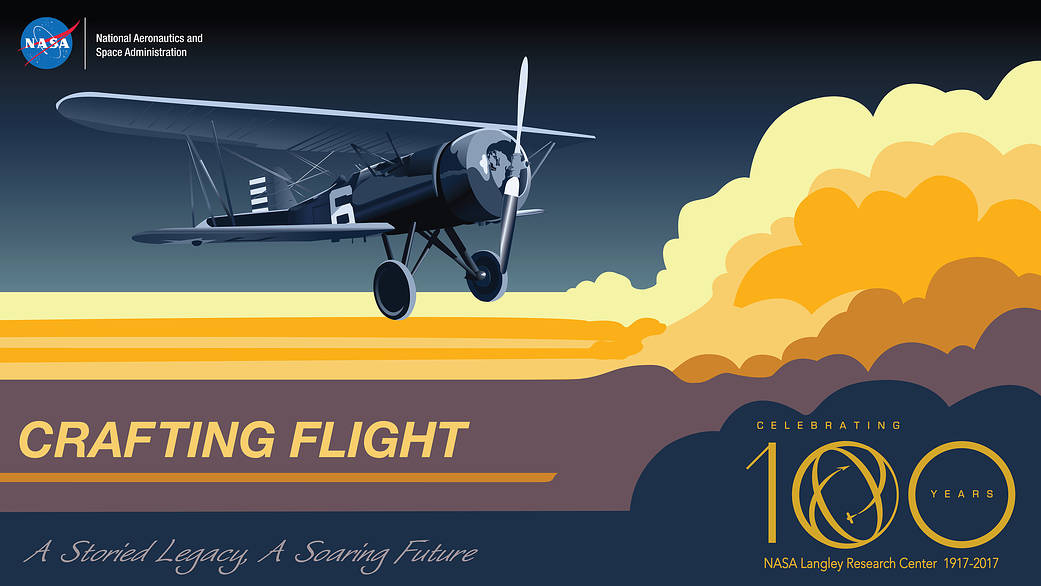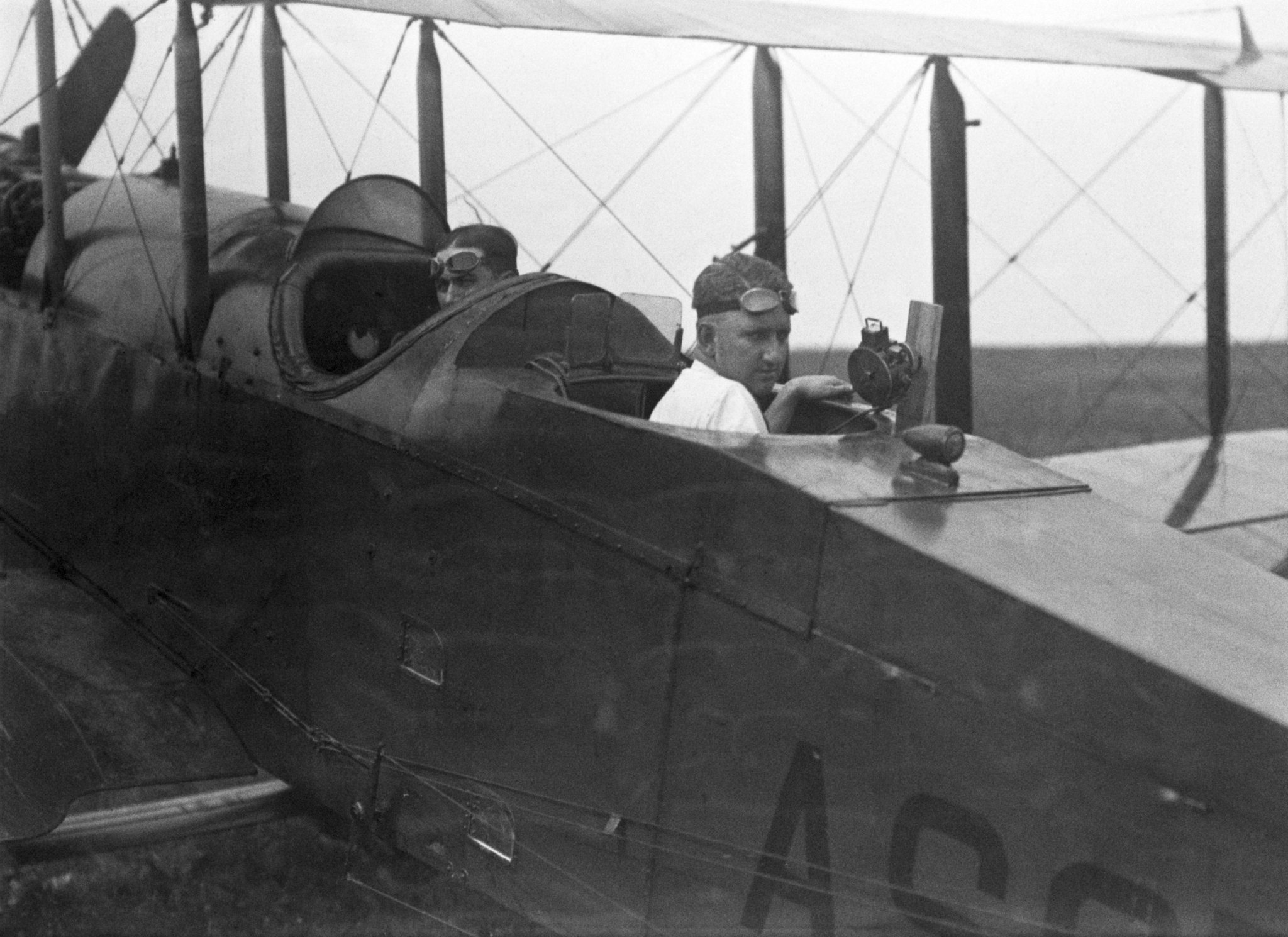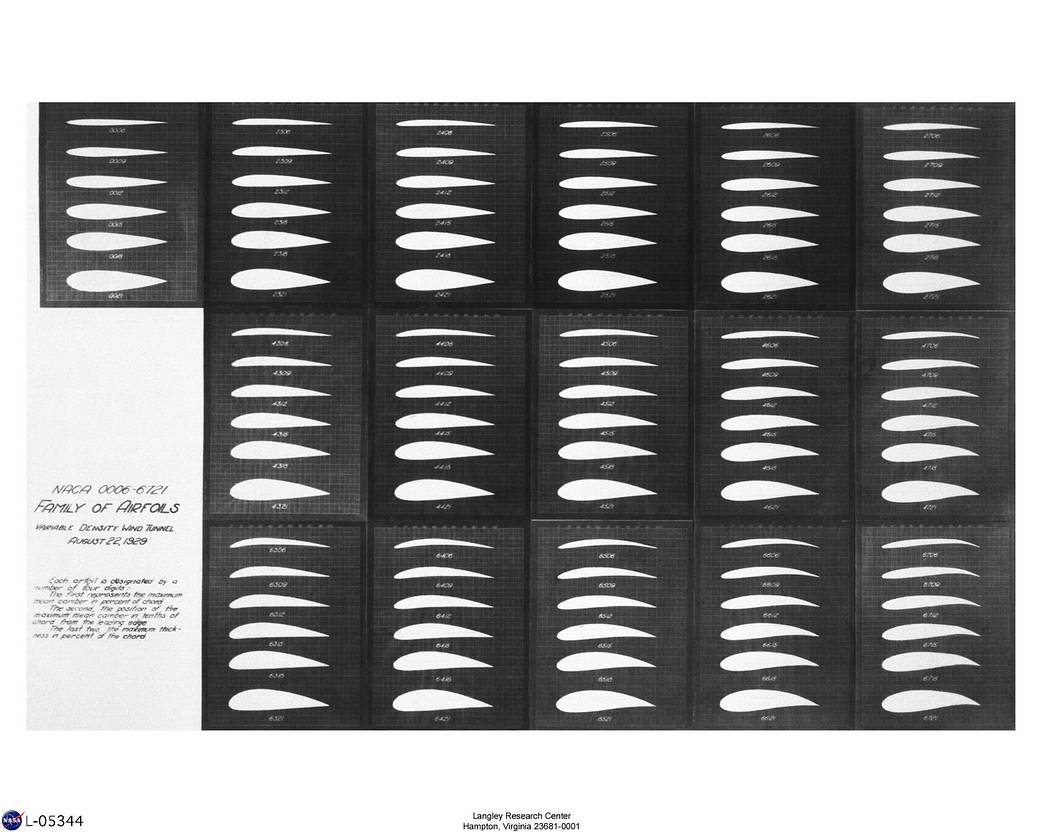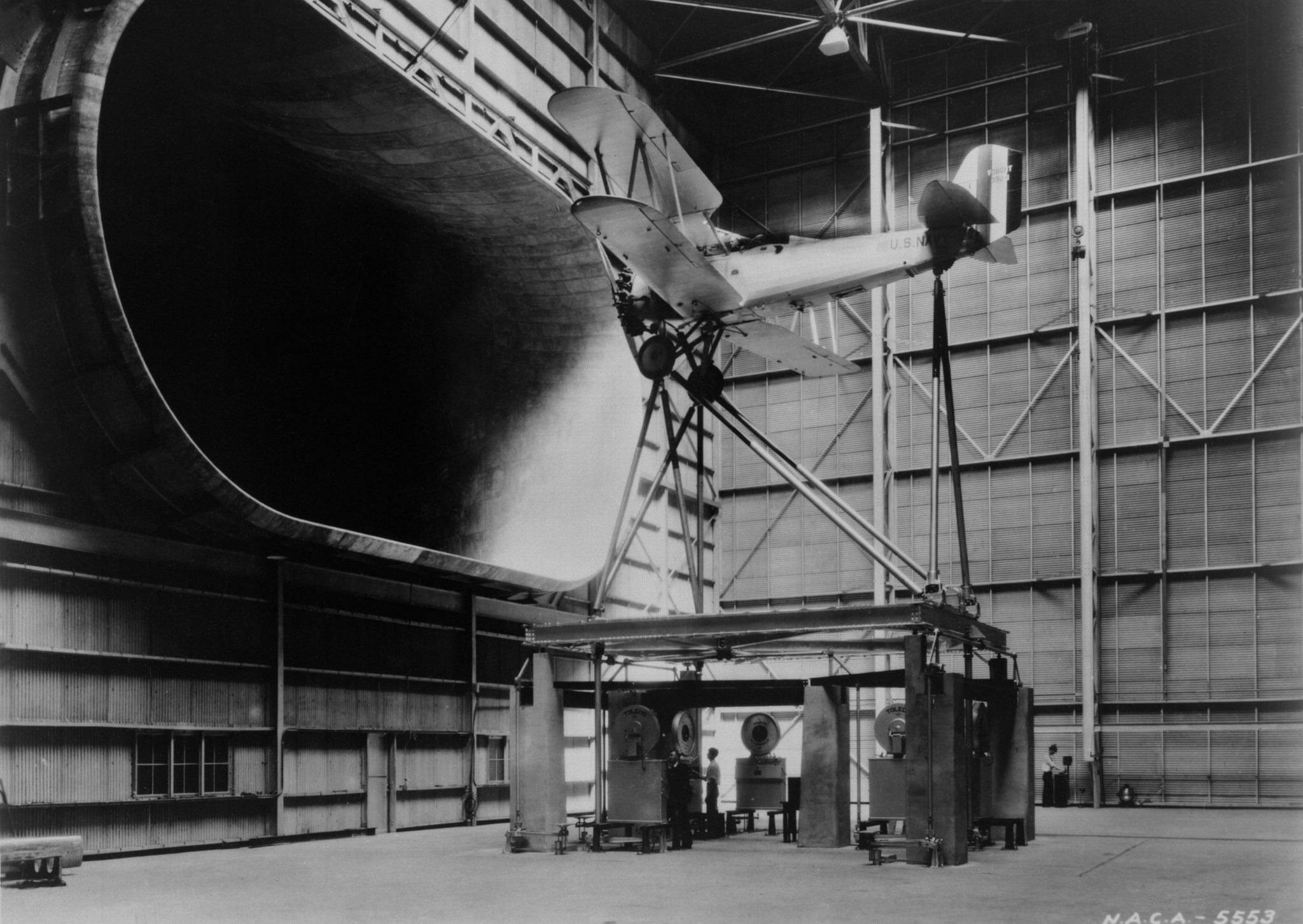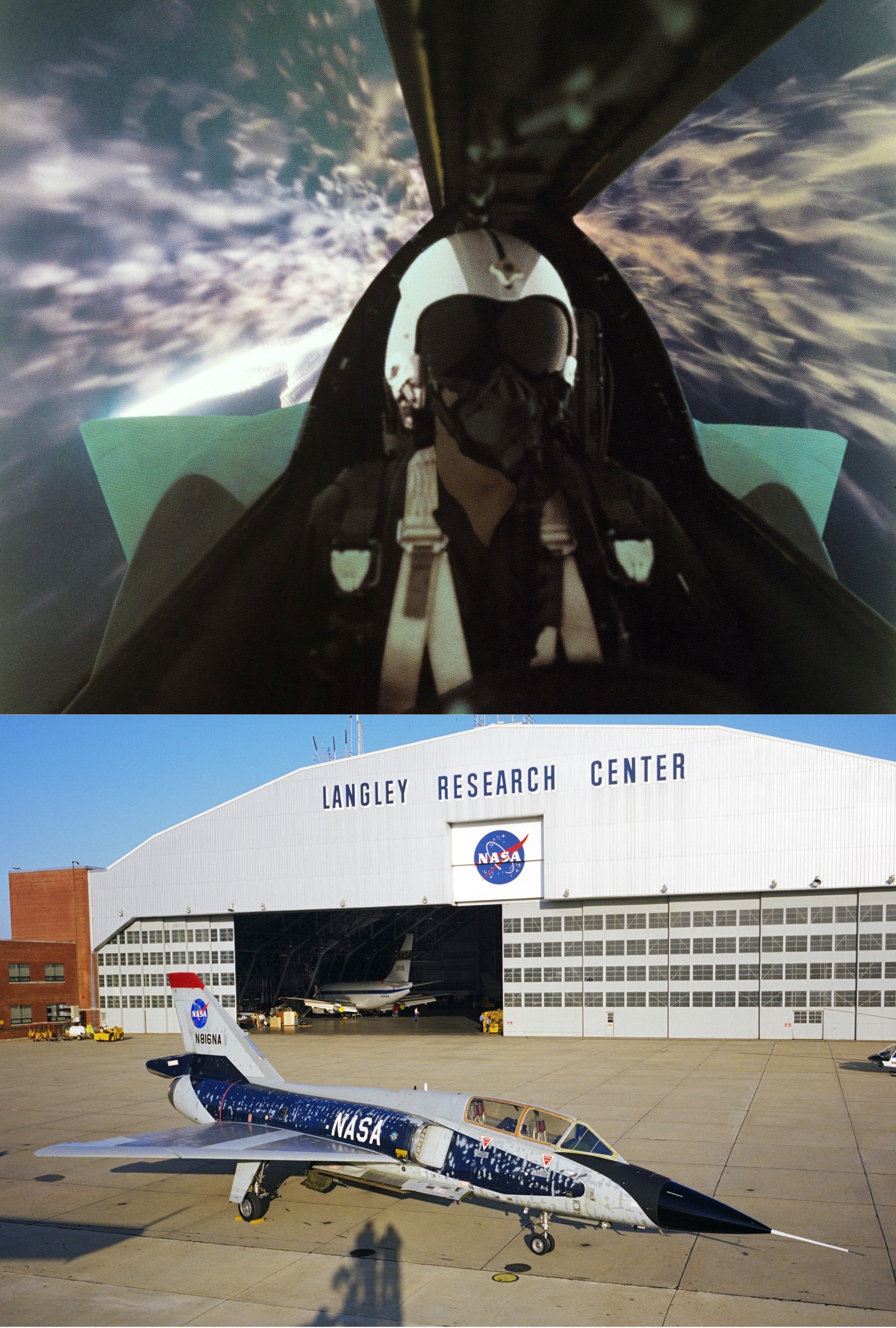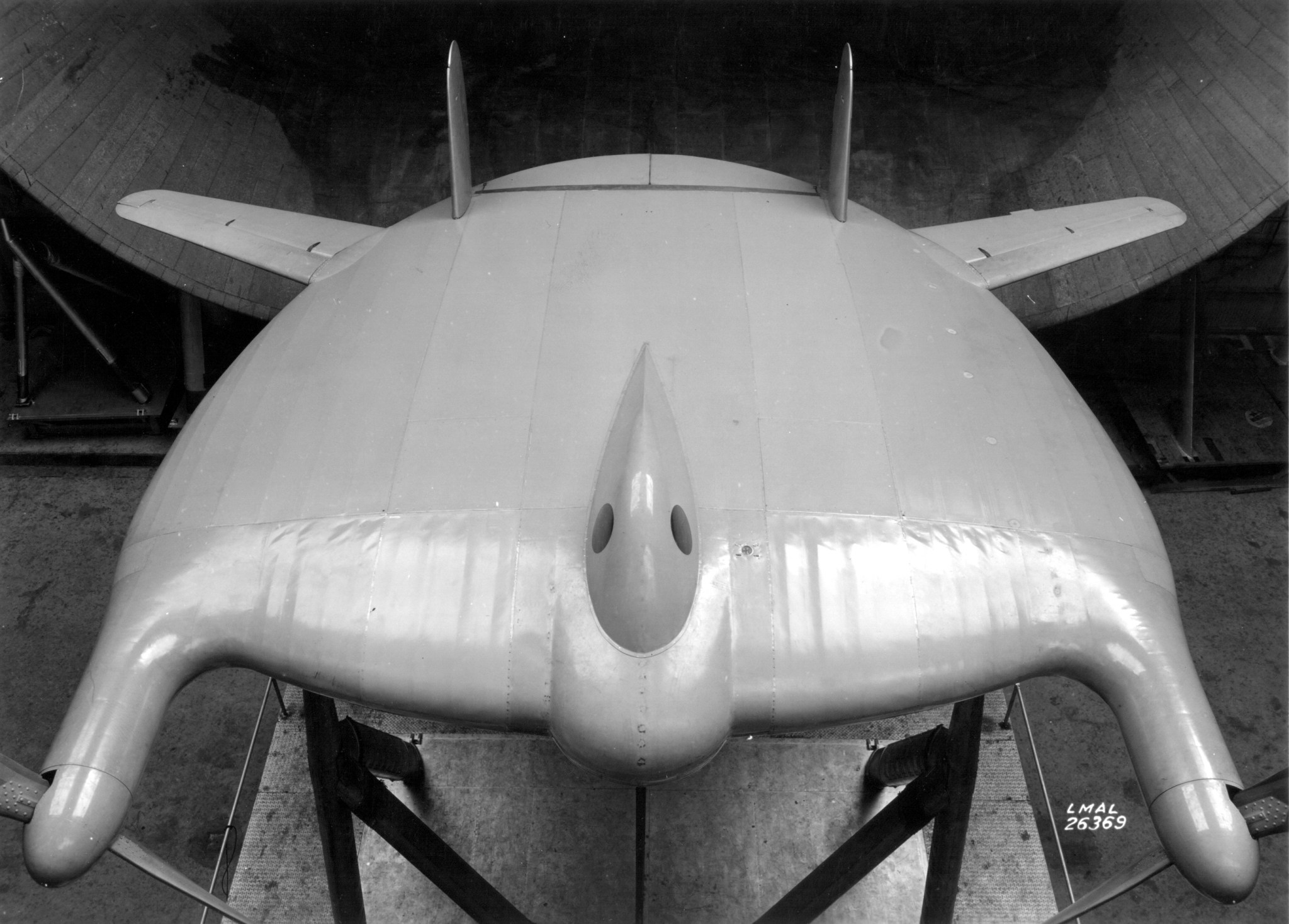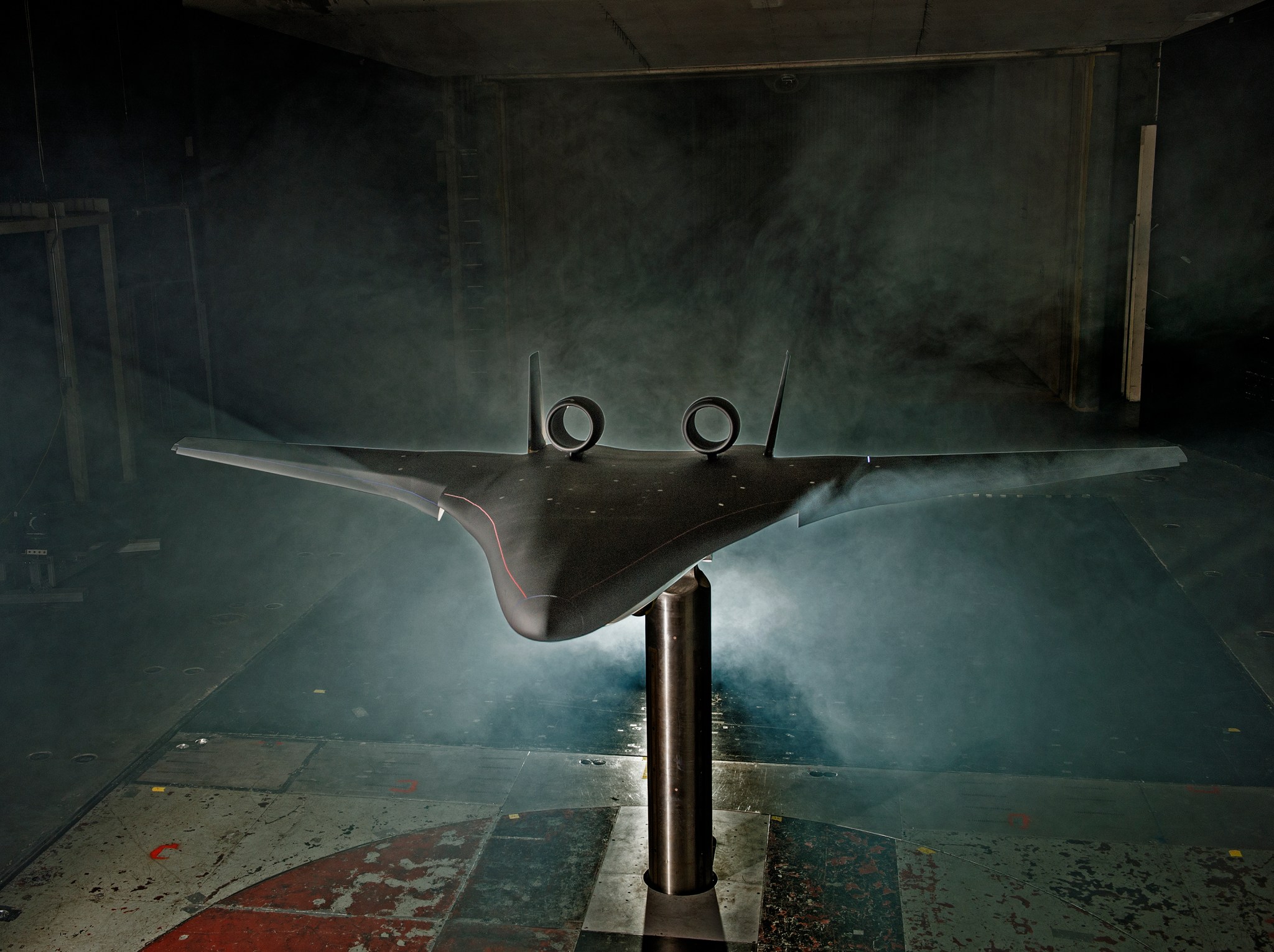William Thomson, aka Lord Kelvin, was, to put it mildly, skeptical. One year before the Wright brothers’ historic flight in December 1903, Kelvin, former President of the Royal Society of England, declared flatly during a newspaper interview that “no aeroplane will ever be practically successful.” Sixteen years later, researchers at Langley Memorial Aeronautical Laboratory would beg to differ.
Across the Atlantic, three years before the Laboratory’s 1917 groundbreaking, a world war had ignited. In that conflict, “aeroplanes” were used first for reconnaissance, then as fighters to attack and/or protect reconnaissance aircraft, then as either defenders or attackers of the first aerial bombers. War-fueled technological progress was rapid, with wide-ranging military applications. What would happen after the firing stopped?
Despite aeronautics innovation, air flight remained more of a curiosity than a crucial part of commerce. That changed shortly after war’s end thanks to “air” mail. By the 1930s, innovations — air-cooled engines, radio communications, metal structures, variable-pitch propellers, pressurized cabins, and overall passenger comfort — changed the air-travel equation by enticing people to forgo trains and embrace aircraft.
Langley would make its first notable aeronautical contribution in the 20s with a series of airfoil, or wing, designs. A number of other research innovations would follow, from engine cowlings to propulsion, to controls and structures. The Laboratory would study new airplane models manufactured by such companies as Curtiss, Martin, Sperry, Vought, Douglas and Boeing and suggest improvements.
Langley contributed to an improving airplane: one that was becoming safer, faster, stronger, and easier to handle. But the plane was far from perfect. Designing the best possible aircraft proved to be a tradeoff between desirable characteristics, such as speed and range. As new versions became ever more sophisticated, and commercial expectations soared, Langley helped in almost every area. From subsonic to supersonic and beyond, the experimental expertise resident in southeastern Virginia was yoked to aviation’s future.
Welcoming the Wind
If aeronautics researchers and engineers built entirely new airplanes every time a design change was made, money would quickly dry up. Enter wind tunnels, carefully designed manmade structures that channel and move air or other gases so that the airstream’s effects on objects are determined without actual takeoff and flight. The creation and development of wind tunnels at Langley would literally change the shape of all things aerial.
So what to simulate in a wind tunnel? It depends. Wind tunnels typically specialize in a particular aspect of flight, benchmarked to speed. Slower than the speed of sound, around 600 miles per hour at altitude? Subsonic wind tunnels are the best bet. Transonic speed tunnels study flight that is slightly below, at, and slightly above the speed of sound. And faster? That’s where supersonic speed tunnels work. Even faster, say five times or more the speed of sound, and hypersonic wind tunnels are put to work.
Wind tunnels would make Langley an aeronautics-research powerhouse. From humble beginnings in the early 1920s to today’s experiments in upgraded facilities with state-of-the-art computers, sensors and supporting instrumentation, Langley wind tunnels today number among the world’s leaders in aeronautical design analysis.
Although Langley primarily welcomed civilian and military aircraft models and components for analysis and testing, concepts and designs for spacecraft, automobiles, ships, trucks, even wheelchairs and swimsuits were all tested in Langley tunnels. These days, computer modeling is giving what insiders call “Big Iron” a run for its money, but wind tunnels remain go-to facilities for definitive data on how airplanes operate and respond to any number of changing flight parameters.
The Safest Skies
From Langley’s earliest days, its researchers knew full well that a multitude of forces could cause aircraft damage or, worse, abrupt descent, loss of control and eventual crash. Through the first decades of the 20th century, using design analysis, structural modifications and the creation of new control systems, Langley engineers worked to counter the aerodynamic forces opposing level flight.
Studies were ongoing in the causes of and recovery from potentially deadly spin, techniques to minimize or entirely eliminate structural vibration that could literally shake aircraft to pieces, and new approaches to processes and methods that to boost aircraft safety both inside and outside the cockpit.
By the 1970s and 80s Langley research into lightning protection would boost the safety of planes. And while not technically an in-air safety advance, runway grooving helped airplanes better grip slippery tarmac during both landings and takeoffs. Then in the late 80s and 90s Langley’s efforts in wind shear research would help pilots escape from microbursts, the huge rush of downward-flowing air from thunderstorms that caused aircraft crashes and fatalities. Wind-vortex studies would help taxiing aircraft avoid loss of lift from the tornado-like air spinning from the wings of departing airliners.
Aging aircraft would get their own version of X-rays, as Langley developed non-invasive imaging technology to analyze structural fatigue from hundreds of aerial travel cycles, as fuselages “breathed” in and out during pressure changes from ground to 20,000 feet or higher and back again. Work in “composite” materials laid the foundation for alternatives to metallic aircraft components.
Nor would helicopters be ignored. Control, propulsion, rotor, noise reduction and fuel-efficiency studies were conducted in partnership with the military. And a series of “vertical lift” crashworthiness experiments would assess how next-generation energy-absorbing structures, components and seats protected occupants in the case of abrupt landing.
In the 21st century, as radar-based air traffic control transitions to the satellite-based Next Generation Air Transportation System, Langley is helping with the creation of advanced software for air traffic management, ways of enhancing plane-to-plane communication, and methods to minimize crew miscommunication. An allied goal: to continuously track, diagnose and restore the health of onboard systems, leading to self-healing and “refuse to crash” aircraft.
Tomorrow’s Makeovers
Would a pancake fly? How about a pair of scissors? What about manta rays? Maybe two cylinders fused together? Could airplanes with 12 propellers on each wing work?
Throughout its history, Langley has proposed and experimented with different airplane configurations. A proposed “flying pancake” saucer-like design first advanced in the 1930s never went beyond the prototype stage. The oblique wing, or “scissors wing” AD-1 aircraft was first extensively studied in Langley wind tunnels, and a version was flight-tested in California. Innovative designs for other craft would follow, including supersonic and hypersonic concepts and models, some of which were flight-tested as smaller, unpiloted versions.
As Langley moved into the 21st century, a renewed interest in reducing aviation’s environmental impact would play into newer ideas about airplane structures and components. A 500-pound (227-kilogram) scale model of the blended-wing (also known as hybrid wing) body aircraft with the silhouette resembling a manta ray would go through three separate configurations to see how the craft reduced noise, fuel use and, potentially, operating costs. Traditional subsonic tube-and-wing configurations would give rise to concepts ranging from a twin-fuselage design — the “double bubble” — to truss-braced wing designs, and ideas for hybrid-power and all-electric aircraft.
Langley oversaw or participated in studies of ways to make aircraft surfaces more slippery to create smoother or “laminar” airflow. There were experiments to assess surface coatings to minimize insect residue that disrupted laminar flow. Partnerships with industry and the Department of Defense resulted in encouraging results for alternate aircraft fuels.
Thanks in part to the results of Langley’s work, NASA proposed the New Aviation Horizons Program, partnering with industry and other government agencies to create an entirely new generation of X-planes. The initiative aims for advancements in lightweight composites for revolutionary aircraft structures, advanced technology to improve propulsion and reduce noise in jet engines, designs to reduce noise from wing flaps and landing gear, even the adoption of shape-changing wing flaps.



























